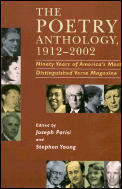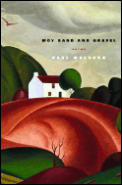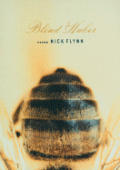 |


| |||||||||||||

Concord, Massachusetts
|
ROOM
|
Publisher's Weekly
 Workshops For New and Established Poets |
|
Building the Best, Book by Book by Joan Houlihan An Interview with Jeff Shotts, Poetry Editor of Graywolf Press 
Jeff, let's start with your connection to Graywolf. How long have you been Graywolf's poetry editor? JS: I have worked in the editorial department at Graywolf Press since 1996, after graduating in Classics and English at Macalester College in Saint Paul, Minnesota. I started as an intern, and was lucky enough to be hired first as an editorial assistant, then assistant editor, then editor, before taking two years to complete an M.F.A. in poetry from Washington University in Saint Louis. Upon graduation, Fiona McCrae, Graywolf's director, invited me back full-time as poetry editor in 2002, which was an enormous and unexpected vote of confidence. What are your main responsibilities? JS: Everything involving the poetry list in some way or another crosses my desk. I read and evaluate solicited and unsolicited manuscripts of poetry and essays on poetry, select and edit the books that Graywolf publishes, write rejection letters when necessary, write copy for catalogs and book covers with our marketing department, travel to meet with authors and literary organizations and attend conferences. Graywolf is a nonprofit publisher, so I also spend a great deal of time fundraising with our director and board of directors. Do you have any associate editors? JS: I work closely with Fiona McCrae, Anne Czarniecki, and Katie Dublinski—the other three editors at Graywolf—when we make final publishing, scheduling, and certain editing decisions, for instance, and I rely on other readers to evaluate all the poetry and poetry-related submissions that come in. But I am the only editor at Graywolf with a literary genre specified in my title, and so all poetry funnels to me. How many readers do you have for the unsolicited manuscripts received there? JS: In any three-month cycle, we generally have three readers who help us consider unsolicited manuscripts. But every poetry submission Graywolf receives crosses my desk, and I then conduct triage to disperse submissions to the appropriate readers. Now for some hard facts. What is the approximate ratio of unsolicited manuscripts to those accepted for publication? JS: We estimate that we receive around 5,000 submissions total each year; half of these are poetry or poetry-related, including full manuscripts, samples, queries, all of it. Graywolf is now generally publishing nine poetry collections each year. So, overall, the ratio is 2,500 to 9, which means we publish about one-third of one percent of the submissions that arrive in a given year. Of the nine that we do publish in a year, four or five of them tend to be solicited and usually at least two or three are by poets Graywolf has previously published. This makes it admittedly even more difficult to take on a lot of new poets, especially unsolicited ones, each year. Does Graywolf have a "stable" of poets, that is, a number of poets who have a slot open for them no matter when they publish? If yes, approximately how many? JS: Certainly there are poets on our list who have published with Graywolf for many years, and we have a commitment to their individual works and careers long-term, which is a substantial component of Graywolf's mission. In thinking about scheduling our poetry books, however, there are a lot of factors we have to consider—not only the experience of a poet, but also the amount of time since that poet's previous book, for example, the aesthetic range we want to convey with each season, and so on. So while there are poets who have a long history at the Press, I don't want to suggest that any poet on our list is above these considerations for the best scheduling to present their work. Do you often turn down subsequent manuscripts from poets you have published? Ever? Why? JS: There have been cases, yes, where we have turned down new work by poets who have previously published at Graywolf. These aren't frequent, but they are difficult and sometimes heartrending situations. If a poet submits a clearly substandard follow-up collection, I think we have an obligation to that poet to express our serious concern, offer editorial suggestions, and in some cases, turn down that particular work. This doesn't necessarily mean we are turning down that particular poet from ever publishing at Graywolf again, but it does mean that we expect our poets to produce work that substantively adds to their careers, to the Graywolf list, and to contemporary poetry and culture. We have a commitment to serve writers, and while history shows that good poets, even great poets, write bad poems, I don't think any publisher does their writers or their readers a favor by knowingly publishing bad writing. Graywolf has published, and continues to publish, some big-name contemporary poets (e.g, Eamon Grennan, David Rivard, William Stafford, Jane Kenyon, Dana Gioia, Carl Phillips, W.D. Snodgrass Albert Goldbarth, etc.), however, I don't see representatives of the so-called postavant-garde in your list. Comments? JS: There is a history at the Press that we have a commitment to—a history that includes many of the poets and essayists you mention. I am not interested, personally, in labeling or categorizing our poets, though those distinctions admittedly do help in what I am interested in—namely, to offer a list wide in its aesthetic sensibilities but one that is, I hope, always engaging to our readers and audiences. The poetry list has, to my mind, widened considerably in the last few years largely because the size of our list has widened considerably. When Graywolf was only publishing two or three poetry collections each year, it made sense for the list to be focused more narrowly—but now that Graywolf is publishing closer to nine collections each year, this gives us room to expand aesthetically. In addition to supporting the writers who we have published previously and, in some cases, for several years—Tess Gallagher, Dana Gioia, Linda Gregg, Eamon Grennan, Jane Kenyon, William Stafford, and others—our list also includes recent and forthcoming poetry titles by Elizabeth Alexander, Mark Bibbins, Sophie Cabot Black, Stephen Burt, Joseph Campana, David Daniel, Thomas Sayers Ellis, Nick Flynn, Katie Ford, Albert Goldbarth, Saskia Hamilton, Matthea Harvey, Tony Hoagland, Fanny Howe, Jim Moore, D.A. Powell, Claudia Rankine, Vijay Seshadri, Tracy K. Smith, Dorothea Tanning, Natasha Trethewey, Mark Wunderlich, and Monica Youn. We have also reopened the list of poetry in translation with the results of publishing international poets such as Pura López-Colomé (translated from Spanish by Forrest Gander), Vénus Khoury-Ghata (translated from French by Marilyn Hacker), Radmila Lazic (translated from Serbian by Charles Simic), Tomas Tranströmer (translated from Swedish by Robert Bly), and Saadi Youssef (translated from Arabic by Khaled Mattawa). We are also working to expand our offerings in essays on poetry, and the list includes recent and forthcoming essay collections by Dana Gioia, Jorie Graham, Carl Phillips, and Tom Sleigh. Graywolf is also planning to reissue volumes by poets who deserve renewed readership, starting with James L. White's The Salt Ecstasies and Thomas James's Letters to a Stranger. These are the authors and books that define Graywolf's poetry. Certainly some of them brilliantly employ post-avant-garde strategies, but—call me old-fashioned—I think they are all at work doing what the best poets do—finding the most artful, lyrical, and meaningful forms and strategies to convey new modes of thought and expression. Although Graywolf is technically a small press (compared to say, Knopf), it is a prestigious one for poetry. In your opinion, how did this reputation develop? Can you give a sense of its start-up, some history? JS: Graywolf is celebrating its thirtieth anniversary in 2004. Scott Walker founded the Press in Port Townsend, Washington, near the Graywolf River, as an all-poetry press, and the books were then hand-sewn, letterpress editions. In 1983, Graywolf moved to Saint Paul, Minnesota, with the assistance of local and national foundations and individuals, and was incorporated as a 501(c)3 nonprofit organization. At that time, Graywolf expanded its list to include novels, short stories, essays, translations, memoirs, and anthologies. In 1994, Scott Walker left, and our board of directors conducted a national search for a new publisher with the result of hiring Fiona McCrae, who had been editing for Faber and Faber in London and Boston. A significant milestone for the Press occurred in 2002, when Graywolf entered into distribution partnership with Farrar, Straus & Giroux, which has increased our visibility among booksellers and the industry at large, as well as among writers and readers. Graywolf's reputation, then, has been built on steady growth, longevity, and editorial acumen. Scott Walker had published books early in the careers of such writers as Tess Gallagher, Linda Gregg, John Haines, Jane Kenyon, and others, and had also published chapbooks and limited editions by such poets as Carol Frost, Richard Hugo, Denis Johnson, Stanley Kunitz, Phillip Levine, and William Stafford. That kind of list was widely recognized early in the Press's history. When the Press expanded to include other genres, writers like Bruce Bawer, Nuruddin Farah, Robin Hemley, Patricia Henley, Laura Kalpakian, Janet Kauffman, William Kittredge, James Laughlin, David Quammen, and Eliot Weinberger, and many more, added significant titles to the Graywolf list. In 1994 and to the present, under Fiona McCrae's directorship, the Press has kept its commitments to its history and to many of these writers, and in the last ten years, Graywolf has added such authors as Elizabeth Alexander, Charles Baxter, Sven Birkerts, Joe Coomer, John D'Agata, Percival Everett, Nick Flynn, Albert Goldbarth, Fanny Howe, Carl Phillips, Victoria Redel, Vijay Seshadri, Steve Stern, and many others to its repertoire. Graywolf is fortunate to have had such a strong history to build on and expand from, and many writers and agents who submit work to us often cite this history and reputation as reasons they send their manuscripts to us. How many people in the press need to agree before a poetry manuscript is accepted for publication? JS: At least two or three of us—which for poetry is generally Fiona McCrae and myself—need to express enthusiastic support for a manuscript before we make an offer. We also consult our marketing and publicity department, Janna Rademacher and J. Robbins, if they have outstanding concerns or particular strategies in mind, before we make an official offer. As publisher, Fiona makes the final decision about accepting every book published by Graywolf. She has been remarkably willing to take most, if not all, of the manuscripts I bring to the editorial discussions, when it comes to poetry and essays on poetry, so I am fortunate to have a great deal of support and flexibility from her and everyone at the Press in building the list. Does the poet have any say in the production: cover design, layout, etc.? JS: Absolutely. We always ask all of our authors if they have preferences and ideas for cover images, typeface, and design, and Anne Czarniecki, who manages all the production work for our books, almost always accommodates our authors' wishes. We can't always do exactly what every author wants, but we always find agreeable cover images and design that convey the author's work artfully and that also lend the finished books marketability. To that end, we do consult our marketing department and also the sales force at Farrar, Straus & Giroux, to ensure our books maintain high production standards and please our authors and readers. Does Graywolf have any plans that you know of to move into digital, print-on-demand, publishing? JS: We have conducted forays into e-book and print-on-demand technologies, but these will be rare, for the time being, while we continue to observe industry trends and reader demand. What are some of the characteristics of the easy-to-reject manuscript? JS: The submissions we most quickly shuttle toward rejection are those where it is clear the authors have no real sense of where they are sending their work. For poetry, these submissions include work that is overtly sentimental or inspirational or that employs strategies like rhyme and meter with no demonstrable craft, subtlety, or appropriateness to subject matter. These submissions, and those like them, only suggest to an editor that this poet has chosen to write and submit poetry without reading or supporting poetry—easily recognizable often in a cover letter, let alone the work itself. Another category that tends to be quickly rejected is the straightforward, plain-style narrative poetry collection. Certainly narrative has a place in poetry, and has had a place at Graywolf—I don't mean to suggest otherwise—but narrative poetry, like any other poetry, needs to be expressed with crafted diction, line break, rhythm, punctuation, structure, and other strategies so that language is as vital as story. Without that level of craft, too many submissions of this kind often lend themselves to being more appropriately rendered in prose, and those are turned down. Deciding to reject work and writing rejection letters is such a difficult, not to mention time-consuming, enterprise, so to tell the truth, no manuscript is easy to reject. It's disappointing to disappoint people, especially those who are risking enough, at least, to write and send their work in to be, in some way, judged. To reduce disappointment, I would urge writers wanting to send their work to a publisher to read and acquaint themselves with that publisher's books. Research ultimately saves the author time and postage and increases the likelihood of getting serious consideration. An editor is always more likely to spend time with a submission, if the author is able to demonstrate why this work might fit that editor's list. It is equally important for that author to know why their work might not fit a particular editor's list too. What are some of the characteristics of the manuscript you hold aside for further thought? JS: In one way, I want to answer this question by saying I don't know, but I'll know it when I see it—which is to say I am excited by being surprised by something I have never encountered in a particular way before. There's no naming it, but perhaps it's a writer's way of demonstrating the ambition to do something new. That kind of risk is exciting, where the welcoming in of the unfamiliar is vital, it seems to me, to write or read poetry, to be alive. More to your question, I look for poetry that is determined to make music, and in this way, the poem should engage the ear as a device to make the poem, at every point, alluring. It is probably what a reader first notices about poetry—the lyric qualities afforded by the poetic line. I will always be arrested by a poem that complicates its subject matter with crafted music to either emphasize or destabilize meaning. With this in mind, I also want the poem, or collection, to be about something. I'm surprised how many poems are enamored with their indeterminacy, the way that they circle something—a subject, a theme, an emotion—but never dare to define what that something is. Poetry engaged and grappling to define or express something is always more interesting, more tactile, and more is inevitably at stake and therefore deserves more consideration. I also must look for manuscripts that function as satisfying collections. It's one of the differences about publishing books of poetry rather than publishing a few poems in a magazine. Not only does each poem have to stand on its own merits, but the work as a whole needs to work in a satisfying way—by achieving that balance of, on one hand, variety, so that the collection never becomes monotonous, and on the other, cohesion, so that the collection suggests an organization and/or a unifying theme or subject. When we come down to the manuscripts we're most seriously considering, these larger issues are extremely important factors. Often, it is not enough to have a gathering of even very strong individual poems if they don't fit together under the same cover. I think the structure of a collection should, perhaps, reflect the structure of an individual poem, where each poem becomes a line in the larger arc of the whole collection. Can you give some advice to the would-be submitter of a poetry manuscript to Graywolf? For example, good/bad times of year to send work, whether to query first, whether to solicit a "sponsor" poet, someone published by Graywolf, for example? JS: As a general rule, I advise poets to familiarize themselves with the publisher's list before submitting, to be sure their work is an appropriate fit. I also suggest that poets first send their work to literary magazines and journals before submitting to a publisher. Graywolf is always looking for the best new poets, and our reading calendar is continuous. We usually ask writers to send in a sample of their work—ten poems for poetry—along with a brief cover letter and publishing history, and the ubiquitous self- addressed stamped envelope. From there, we will decide to ask to see the whole manuscript or not. We try to respond to all submissions within three to six months, but admittedly it can be longer, especially when we need to weigh a lot of high-potential manuscripts with each other. We try to read a wide variety of literary magazines and web sites, and we do receive a lot of recommendations from poets, some of them published by Graywolf, some of them published elsewhere. However, I don't recommend that anyone ever solicit another poet to recommend them to a publisher. Firstly, it only adds to that poet's list of recommendations to write, and many of these poets have more important things to be doing—like writing their own poems. Secondly, it potentially puts both the poet writing the recommendation and the editor receiving the recommendation in an awkward position, if the work is rejected. And thirdly, recommendations don't change the work, and all that a writer has control over is the work. What matters, in the end, is the work. Jeff, thanks so much for your thoughtful and honest responses. Very helpful!
2020 Pennsylvania Ave., NW Suite 443 Washington, D.C. 20006 algonkian@webdelsol.com Phone: 703-281-4426 |

 The Poetry Anthology, 1912-2002:
The Poetry Anthology, 1912-2002:  Moy Sand and Gravel
Moy Sand and Gravel
 The Poetics of Space
The Poetics of Space Blind Huber
Blind Huber Randall Jarrell and His Age
Randall Jarrell and His Age